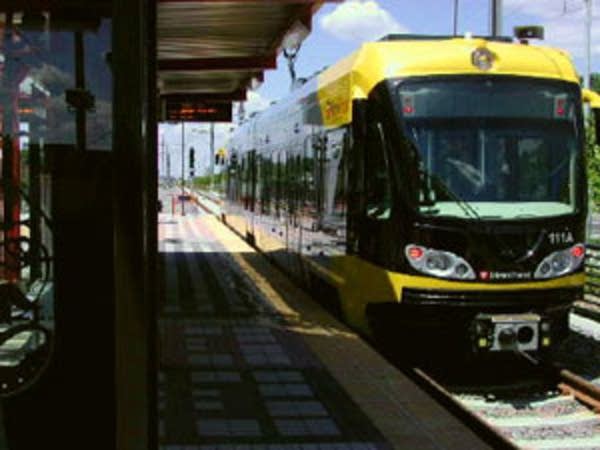Central Corridor study says train vibration can be eliminated
Go Deeper.
Create an account or log in to save stories.
Like this?
Thanks for liking this story! We have added it to a list of your favorite stories.

The consultants studied eight potentially vulnerable areas along the corridor, ranging from an obscure recording studio on University Ave. to a cluster of research laboratories at the University of Minnesota.
Central Corridor Project Director Mark Fuhrmann says the 216-page report shows that in every case, concerns about vibrations can be resolved.
"This now puts it under one cover and confirms that there are impacts, and those impacts can be mitigated," said Fuhrmann.

But U of M officials have yet to sign onto the proposed measures outlined in the study.
Turn Up Your Support
MPR News helps you turn down the noise and build shared understanding. Turn up your support for this public resource and keep trusted journalism accessible to all.
University Vice President Kathleen O'Brien says officials are still committed to the chosen route through campus, but they'll continue to raise concerns about vibrations and electromagnetic interference with the U's research labs.
"Our concern is that if there's an impact on this sensitive, highly technical research equipment, then it will not be able to be mitigated," said O'Brien. "In fact, those laboratories would have to be moved, and the project might have to pay for the relocation."
O'Brien says relocating one of the major laboratories, Hasselmo Hall, would cost about $22 million.
The university labs are located between 60 and 150 feet from the tracks, which she says is a much shorter distance than other examples of sensitive research laboratories that neighbor other light-rail transit projects in the U.S.

The study also included the broadcast center of Minnesota Public Radio and two neighboring churches. Those three entities, in downtown St. Paul, are waging a high-profile campaign to have the transit route moved off Cedar St.
MPR's public affairs director, Jeff Nelson, is skeptical of the report. He says the light rail planners have yet to show that the recommended measures can work for a transit line placed within 12 feet of a recording studio.
"You can do a lot of analysis, and drop 40-pound weights on the street and 40-pound weights in our studio, and try to create a model. We're looking for both a model, and also for a practical example of this kind of mitigation working in the real world," said Nelson.
Planners for the 11-mile transit line say they've set aside nearly $32 million to offset any negative effects from the project. The bulk of that money will go toward the U campus, where traffic will be diverted to make way for a so-called transit mall on Washington Ave.
"If there's an impact on this sensitive, highly technical research equipment, then it will not be able to be mitigated."
That leaves up to $8 million to resolve concerns elsewhere on the route.
To reduce the vibrations along the line, consultants have recommended the use of steel and concrete fasteners that more tightly affix the tracks to the rail bed.
In more serious cases, such as the portion of track in front of MPR, planners say they're willing to install a much more costly option called a "floating slab track." It consists of a concrete slab supported by steel coil springs. When the train moves over the track, the vibration is isolated into the slab.
Furhmann, the project director, says the floating-slab solution would go beyond what MPR's own consultants recommended in 2003, before the company expanded its headquarters in downtown.
MPR officials say that study didn't have the benefit of the most recent data, which shows that noise and vibration would curb the company's ability to record and broadcast.
MPR's consultants believe "mitigation would be extremely difficult, extremely expensive, and may not even be possible," Nelson said.
One facility that would need extra remediation is a small basement recording studio on University Avenue, called Aggressive Records. The study recommended building a "room within a room," or even relocating the studio.
Owner Dave Marcin says either way, he would be inconvenienced by the project.
"I would love to fight it, but I'm just a small cog in a big churning wheel that will churn right over me," said Marcin.
He says at this point, he's just trying to get a fair shake from project planners.
Other vibration-sensitive locations identified in the report are the KSTP television studio, a laboratory for the Minnesota departments of health and agriculture, the Church of St. Louis, King of France, Central Presbyterian Church, and the McNally Smith College of Music.
The Central Corridor staff say they'll address all of these concerns in detail in a final environmental study due next spring.



